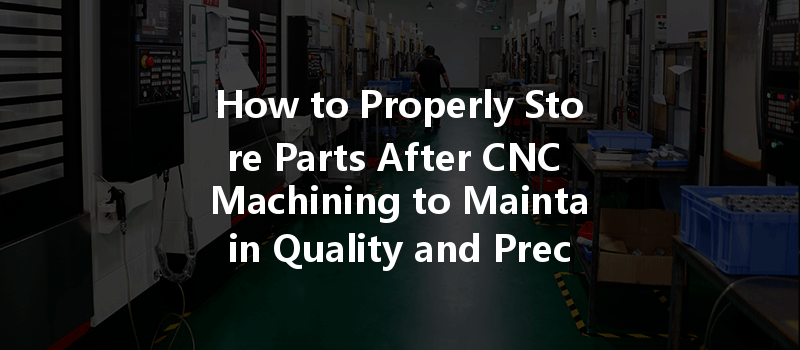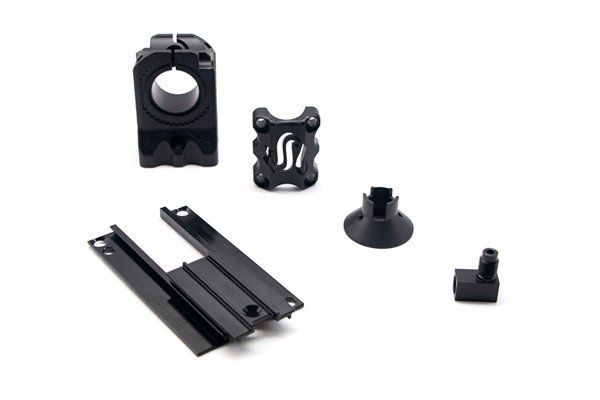Did you know that over 70% of all manufacturing issues stem from inadequate handling and storage of machined parts? For companies that rely on CNC machining, this statistic underscores the importance of not only precision in the machining process but also in how parts are stored afterward. As manufacturers, we often focus intensively on producing high-quality components, but if we neglect the storage environment, all that effort can be undone in an instant.
In this blog, we will delve into the essentials of properly storing CNC machined parts. From understanding the factors that contribute to quality degradation to implementing best practices for safeguarding your components, this guide aims to equip you with the knowledge to maintain quality and precision throughout your manufacturing process.
—
—
CNC (Computer Numerical Control) machining is a manufacturing process that employs computer-controlled machinery to create precise components from various materials. This technology is utilized across different industries, including aerospace, automotive, medical, and consumer electronics. The reliability and accuracy of CNC machining make it indispensable, as manufacturers can produce complex geometries and intricate designs with consistent quality.
Ensuring that the end products maintain their quality is a significant concern for manufacturers. While CNC machining is exemplary in creating parts, improper storage can compromise their integrity.
Storing CNC machined parts poses multiple challenges. Each machined component has unique qualities, such as finishes, material types, and tolerances, that must be preserved. Failure to store them correctly can lead to issues like warping, corrosion, surface damage, or loss of precision.
Common Challenges
Understanding these challenges is crucial for implementing effective storage strategies.
a. Environmental Conditions
Environmental factors play a significant role in the preservation of machined parts. Humidity, temperature, and exposure to elements can create a volatile situation for components.
b. Material Sensitivity
Different materials react differently to storage conditions. For instance, aluminum may be more prone to oxidation, while plastics may deform under extreme temperatures.
c. Handling Practices

Improper handling can lead to surface scratches, dings, or changes in the geometrical precision of parts. The technique used for handling, transportation, and stacking can make a profound difference.
To ensure that CNC machined parts retain their quality, implementing best practices is essential. Here are several key strategies:
a. Temperature and Humidity Control
Keep the storage area climate-controlled. Aim to maintain a stable environment, ideally with a temperature range of 20-25°C and relative humidity between 40-60%. This balance will help minimize the risks of corrosion and material deformation.
b. Use of Proper Packaging Materials
Select packaging materials that will protect against environmental factors. Options include:
c. Shelving and Racking Systems
Use appropriate shelving that allows for maximum airflow and easy access. Employ racks that can bear the weight of machined parts and prevent sagging or deformation.
d. Customized Storage Solutions
Tailor your storage solutions to accommodate the specific dimensions and weight of the parts.
To enhance storage life and quality retention, consider applying protective methods:
a. Coatings and Treatments
Applying a protective coating can prevent unwanted chemical reactions, especially in sensitive materials. Consider:
b. Anti-Corrosion Measures
Utilize desiccants and dehumidifiers in storage facilities to maintain an optimal moisture level. Regularly check zinc-coated or galvanized materials.
Implement an inspection regime to catch any potential damage before it escalates. Regular checks for signs of corrosion, surface defects, or dimensional changes can save considerable costs in the long run. Mark a schedule that aligns with your production rate and inventory turnover.
To ensure standards are met, a robust quality control (QC) system should monitor the handling and storage of parts. This system could include:
Train employees on the importance of storage practices and how they affect quality. Knowledge-sharing initiatives can drive home the significance of proper handling and care of CNC machined parts.
Training Tips
In conclusion, proper storage of CNC machined parts is not just about maintaining cleanliness or organization; it’s a crucial element of quality assurance in the manufacturing process. By considering environmental factors, using quality packaging, establishing regular inspections, and engaging employees in best practices, manufacturers can significantly reduce the risk of quality degradation.
Taking a step to invest time and resources in effective storage strategies can lead to enhanced product lifespan, cost savings, and improved customer satisfaction. As the industry continues to evolve, ensuring that high-quality parts maintain their integrity through expert storage practices will be increasingly relevant.
Remember, how you treat your parts post-machining will have lasting implications on their performance and quality. So, examine your practices, learn the essentials, and invest in safeguarding the fruits of your CNC machining labor. It’s a choice that pays dividends in the quality of your output and the satisfaction of your customers.






